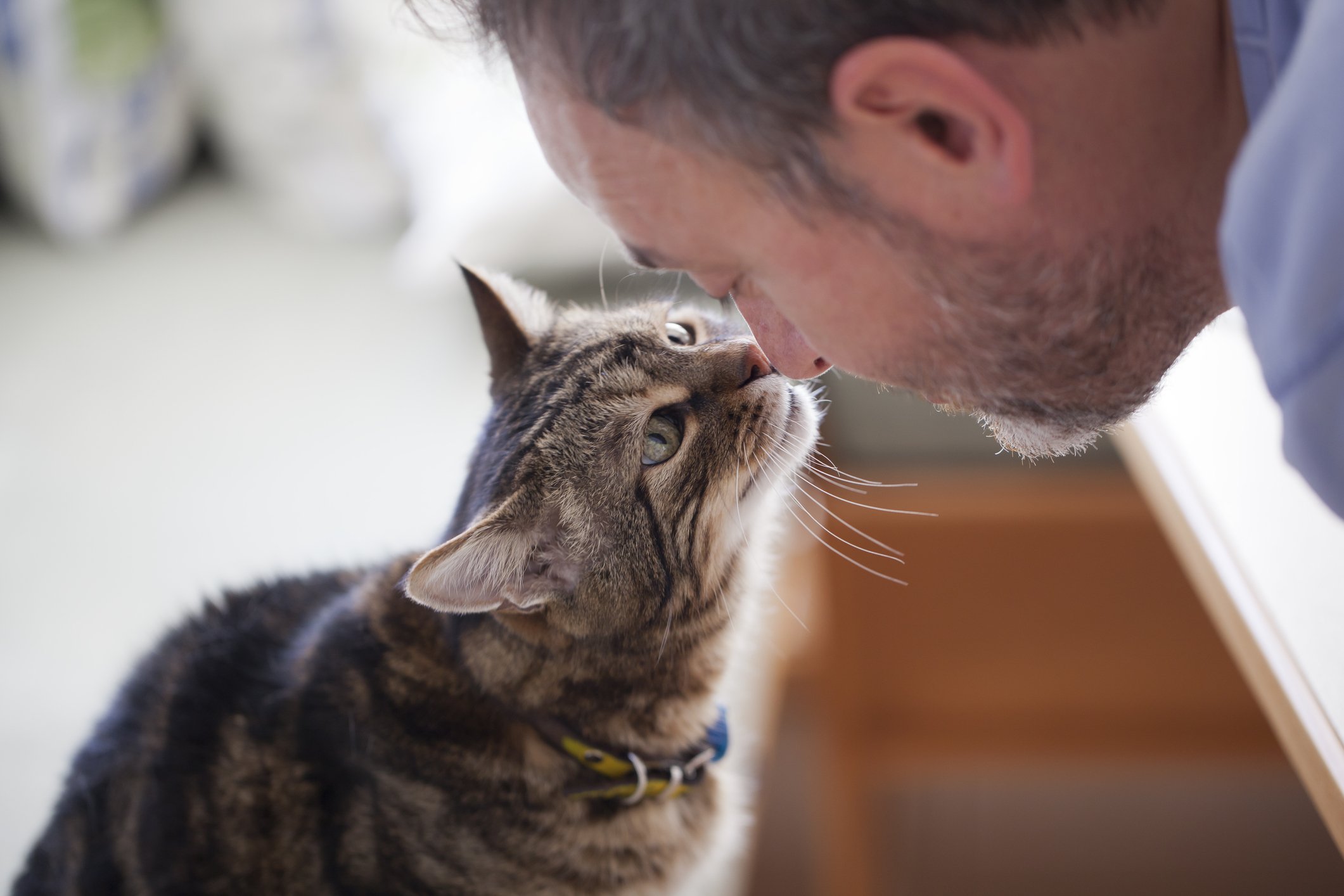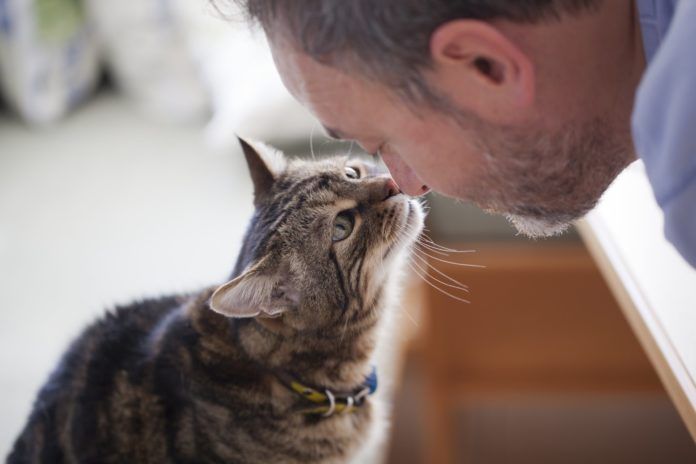@ 1001slide/Getty Images


Do you have a cat with chronic conjunctivitis (pink eye)? Washington State University’s College of Veterinary Medicine — a couple hundred miles from both Seattle and Boise — wants to see if a new vaccine will work to improve her response to the condition.
How about a pet with kidney disease? Colorado State University’s College of Veterinary Medicine and Biomedical Sciences — 65 miles from Denver — wants to see about improving her appetite and decreasing vomiting with a medicine applied topically to her ear rather than administered as a pill, which could increase compliance because so many cats hate pills.
Or maybe your pet has small cell gastrointestinal lymphoma. If so, Texas A&M University’s College of Veterinary Medicine & Biomedical Sciences — about 90 miles from both Houston and Austin — is interested in finding out if targeted radiation therapy will help delay its recurrence in the intestine.
And at the University of Pennsylvania’s School of Veterinary Medicine in Philadelphia, investigators are recruiting cats with soft tissue sarcomas to see if near-infrared imaging can improve a surgeon’s ability to see the cancer and its margins during surgery in order to secure a better outcome.
It’s not just these four veterinary schools that are recruiting cats for clinical trials. There are 30 veterinary schools across the United States, and most of them — if not all — conduct clinical trials to improve cats’ lives and lifespans. And your cat can safely participate in the research.
However, not all of the trials are about physical health. For instance, the School of Veterinary Medicine at the University of California, Davis, 15 miles from Sacramento and 75 miles from San Francisco, is currently recruiting cats for a study to better understand feeding behaviors and activity levels under different household conditions.
Some of the potential benefits to you and your cat for participating in these trials are obvious. But are there other reasons to schlep your pet, say, two hours from home to participate in a clinical study? Absolutely!
A win-win situation
Of course, if your cat has an illness like kidney disease and you enter her into a trial to see if a new drug will improve management of the condition, you stand a chance of your pet coming out healthier than she was when she went in. But depending on the study, other benefits could accrue to your pet as well. That is, during the course of the research, she might also receive a treatment that’s already proven.
How is that? Consider that in many research trials, subjects are given either the treatment or drug being tested or a placebo, which means half the cats are not receiving the possible benefit. This type of trial design is typically used when there is no known effective treatment. But, says Catnip editor-in-chief John Berg, DVM, “a lot of trials, particularly in the area of oncology [cancer], are designed so that they don’t start out with a placebo. First, all the cats enrolled get the current standard of care in treatment,” that is, the current best practice out there. “Then they’re randomized to receive either the new treatment being tested or a placebo.
“But by getting the best treatment currently available to start with, they are assured of receiving the gold standard in medical care for a very serious disease,” says Dr. Berg, a soft tissue surgeon at Tufts with a special interest in certain types of cancer. “That way of doing things tends to be more palatable not only for the owner, but also for investigators.” Everybody involved knows that even if a cat ends up getting placebo, she will have started out with a useful medical therapy.
In some cases, Dr. Berg says, the treatment a cat is given might normally cost several thousand dollars. But as part of a trial, it is conferred for free, or at a greatly reduced price. That means owners who might not otherwise have been able to afford to give their cat the gold standard in treatment can now do so.
Money does not always come just in the form of free or reduced-priced treatment. Sometimes, owners receive money for enrolling their cat in a clinical trial. “How much financial support there might be varies quite a bit,” says Dr. Berg. “Trials funded internally from school funds tend to have small renumerations compared to what might be found with a trial sponsored by a government agency like the National Cancer Institute or a corporate-sponsored trial. Such organizations tend to have deeper pockets and can devote more money to making trials happen.” Sometimes, Dr. Berg says, renumeration can be in the hundreds, or even thousands, of dollars.
According to Dr. Berg, that might be part of the reason that “there are cat owners who sort of shop for clinical trials. Some might be motivated by free treatment or the opportunity for renumeration. But some simply want to participate in the most cutting-edge research out there. Most studies are designed to test possible new therapies that seem promising, and they want to be in on that. So they’ll travel.”
Categories of clinical trials
“Trials kind of break down into two categories,” says Dr. Berg. One type is the non-randomized trial. That means all the cats get the treatment, and the goal of the research is to determine whether it works and is better than existing treatments.
The other broad category is the randomized controlled trial. This is considered the gold standard in scientific research. The way it works is that the cats are randomly selected either to receive the treatment being tested or a placebo. These kinds of trials are often double-blind. Neither the researcher nor the owner knows which cats are getting the treatment and which aren’t. That way, there can be no bias in determining how well the cat does in responding to the new therapy.
In more and more randomized controlled trials, all the cats enrolled at first get the best treatment currently approved before moving on to the randomized phase in which an unproven treatment is tested. That way, even the cats who receive a placebo will have started out getting the best medical therapy science now has to offer.
More than a ripple effect
For some people, it’s not just about helping their own cat, or their own wallet. It’s about helping the feline population in general. “Many people welcome the opportunity to help other cats,” Dr. Berg says. Indeed, a number of clinical trials at the various veterinary schools need “control” cats — cats who are not sick but who serve as a comparison to the group of cats who have a health issue and require treatment.
Those who participate may also be helping other people, including those who don’t have cats. “Some of the trials are really directed at human diseases,” Dr. Berg says. “Many of the cancer trials are like that,” he says. “Chemotherapy, immune-modulating therapies, targeted drug therapies — in some instances, testing these treatments in cats with cancer is an early step before testing them in people,” so by enrolling your cat in a clinical trial, you might be helping to find cures for illnesses that befall our own species.
In other words, Dr. Berg says, “everybody wins” — your own cat, you, other cats and their owners, and sometimes, people who do not have cats in their own lives. The information generated by the results of a trial could end up having broad benefits. “Trials are a key way we make progress,” emphasizes Dr. Berg.
Hoops to jump through
Not any cat can enter any clinical trial, however. Sometimes, as in the case of the University of California, Davis trial looking at living conditions that affect cats’ feeding behaviors and activity levels, the cat has to be older than one and younger than 10 and not live with more than one other cat. Other times, there are restrictions around the animal’s degree of illness.
Then, too, a number of trials require repeated visits to the veterinary school for follow-up testing in the form of blood work or other screenings, some of which may require sedation or even anesthesia for procedures like biopsies to better understand the response of a tumor to treatment, or imaging to determine whether a cancer has metastasized. Federally funded and corporate-funded trials in particular “tend to be pretty rigorous about following up with patients,” Dr. Berg says, “and that can create inconvenience for the owner.” In other words, you need to be clear ahead of time about what you’re getting into so you can be sure you can follow through on the commitment. Otherwise, your cat’s participation will come to naught.
Informed consent
Trials are always conducted with complete written informed consent from the owner about the risks and possible benefits of participation, Dr. Berg says. “Every single veterinary school has a committee that reviews any clinical trial protocol to be sure the client consent form characterizes the trial accurately and is complete in the information it gives. In fact, the whole research project has been through a review process prior to the investigators even getting permission to run the trial and put out the word for enlisting cats.”
To find out about clinical trials being run by a veterinary school near you, do an Internet search of the school. Then look for a tab that says ‘Research,’ which many of them have. Often, a drop-down on that tab will list the various clinical trials currently enrolling cats (and dogs and horses).
Sometimes, the ‘Research’ tab won’t get you to the information you’re looking for, and finding the current clinical trials on a veterinary school’s website can sometimes be challenging. But you can always put the phrase ‘clinical trials’ in the search bar or call the school for more information. Most schools are happy to talk to people interested in having their pets participate in research that could help the canine, and potentially human, populations. — Larry Lindner




